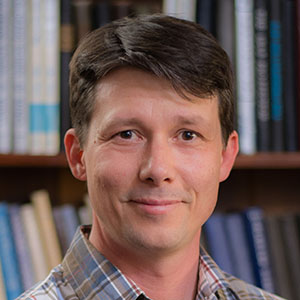Kenneth Xerxes Steirer
Research Assistant Professor, Department of Physics, Colorado School of Mines
I seek to help improve sustainability of society through STEM. I began experimental research in the summer of 2004 with Professor David Braun, a former post-doc of Nobel Prize winning Alan Heeger. During my graduate work, I spent most of my time at the National Renewable Energy Laboratory under the supervision of Dr. David Ginley developing new processes for functional thin films and coatings. As a post-doc at the University of Arizona working for Professor Neal Armstrong, I acquired a deep respect for ultra-high vacuum analytical techniques as well as new methods of film growth. A competitive position as an NREL Director’s Postdoctoral Fellow brought me back to Colorado where my expertise as a surface scientist grew immensely under the mentorship of Dr. Craig Perkins and many other NREL scientists. Now a the Colorado School of Mines, I enjoy facilitating student learning on several of our most advanced materials characterization equipment. At home, I enjoy my family, our urban farm, and leading several sustainability efforts in the city of Edgewater, Colorado.

Education
- PhD, Applied Physics, Colorado School of Mines
- BS, Physics, California Polytechnic State University-San Luis Obispo
Teaching
I enjoy teaching online and in hybrid formats. Luckily, I started building online and hybrid courses in 2018 after completing online teacher development training. The first course I build was a new model for a hybrid graduate materials science class in surface science. The fully online instructional build and asynchronous delivery was complemented by weekly lab sessions. Another class I built for hybrid delivery was a sophomore level course, Introduction to Energy. Here, the class was synchronous with live lectures. When the pandemic struck, this course seamless shifted totally online and helped just a little when we were all a bit stressed. Lately, I’ve been writing a new textbook for Energy, and working to take research instruments online to enhance remote learning and research opportunities for anyone regardless of location or background.
Research
My areas of expertise bridge several areas of physics and chemistry. Beginning my career in organic semiconductor processing and device physics, I have found amazing utility in the electronic and chemical aspects of interface formation and operation, thin film growth and processing and vacuum based methods. Think of the organic light emitting devices now found in the most impressive displays and many interfaces which must satisfy power, performance and durability requirements. Vacuum science played a huge role in the development of this and many other advanced device architectures. In vacuum, the ambient variables may be completely controlled for, ensuring a robust testing of physical and chemical hypotheses. Whether we’re testing a newly synthesized molecular material or optimizing an oxide thin film growth process, we seek approaches to add depth to the analysis in ways that are fundamental in nature.
 Here is an example of how one of my favorite vacuum science methods, photoelectron spectroscopy (PES) in its pure form, can provide new information on an important material that is changing under the X-rays. From PES, methyl ammonium lead triiodide (an important solar material) composition is measured repeatedly over 40 hours. During that time the I concentration is observed to decrease relative to Pb (left to right in the figure). However, the electronic properties are invariant as evidenced by the lack of shift in the valence band edge. It is not until a significant fraction of I (as well as C and N) has left the material that the system begins to transform into lead iodide. Electronic structure modeling shows that these types of defects fall outside the bandgap and self compensate. This is the first experimental observation of high defect tolerance for this material, which is helping to explain its incredible performance in solar cells. Steirer et al. ACS Energy Lett., 2016, 1 (2), pp 360–366
Here is an example of how one of my favorite vacuum science methods, photoelectron spectroscopy (PES) in its pure form, can provide new information on an important material that is changing under the X-rays. From PES, methyl ammonium lead triiodide (an important solar material) composition is measured repeatedly over 40 hours. During that time the I concentration is observed to decrease relative to Pb (left to right in the figure). However, the electronic properties are invariant as evidenced by the lack of shift in the valence band edge. It is not until a significant fraction of I (as well as C and N) has left the material that the system begins to transform into lead iodide. Electronic structure modeling shows that these types of defects fall outside the bandgap and self compensate. This is the first experimental observation of high defect tolerance for this material, which is helping to explain its incredible performance in solar cells. Steirer et al. ACS Energy Lett., 2016, 1 (2), pp 360–366
Mentoring
I enjoy working with students who bring their ideas and curiosity to discover new things. While my passions orbit around surface science, I encourage students to explore all aspects of discovery and innovation, from fundamental physics and chemistry to the processes of patenting and invention.
Student Testimonials
“I found the websites and software you exposed us to really, really interesting. I also liked getting to learn a lot about a broad range of energy topics.”
“Dr X’s best quality is his ability to make energy topics seems interesting because he is genuinely interested in them himself.”
“He always was energetic in class. Excited to teach and talk to us. Very nice man. Cared a lot about students.”
“Dr. X is super passionate about energy and seems to truly care about his students and their success in the course.”
“Dr. X is hands down one of the best professors I have had, he is incredibly passionate and always willing to support his students. He is constantly offering opportunities to connect with him to ask questions or to just talk about energy. But I don’t think anyone is as excited as he is about it.”
“I really liked this class and thought it was super interesting and I especially liked all the projects.”
Students
Research Team:
Current Student Researchers
-

Anthony Donakowski Graduate Student Anthony Donakowski working on lithium battery durability.
- Undergraduate in Physics, Donald Allen Liddell working on photostability of halide perovskite and XRD.
Alumni:
- Undergraduate in Physics, Sebastian Soldwisch working on 2-terminal XPS.
- Undergraduate in Computer Science, David Fresco working on XPS simulations.
- Undergraduate in Physics, Christine Evans working on XPS simulations.
- Undergraduate in Environmental Engineering, Hannah Herr
- Undergraduate in Environmental Engineering, Jasey Diaz
- Graduate in Physics, Connor Pierce
- Undergraduate in Materials Science, Matthew Cole Bigler
- Undergraduate in Physics, Jordan Bass
- Undergraduate in Chemical Engineering & Physics, Michael Reinisch
- Undergraduate in Materials Science, Michael Dzara
